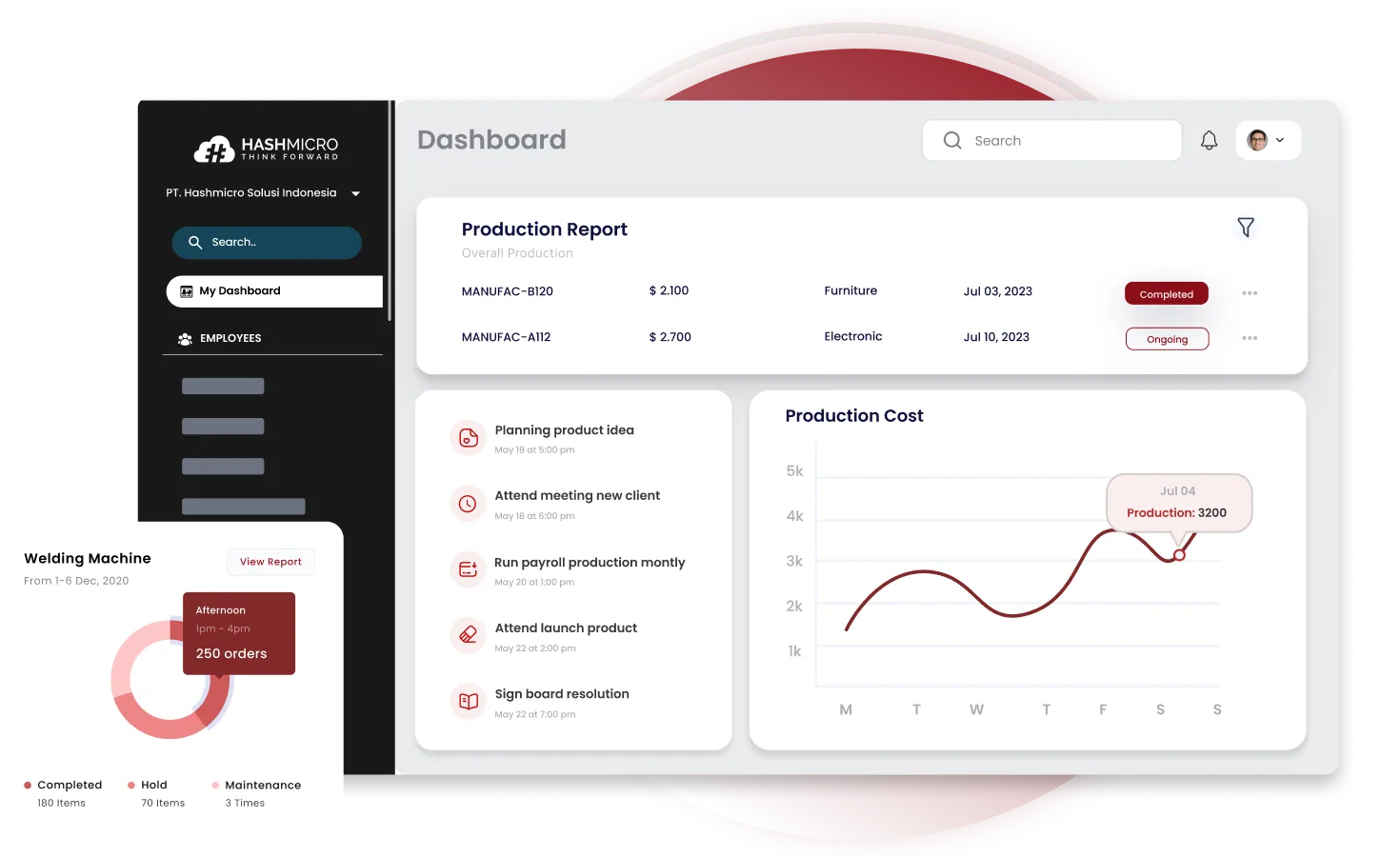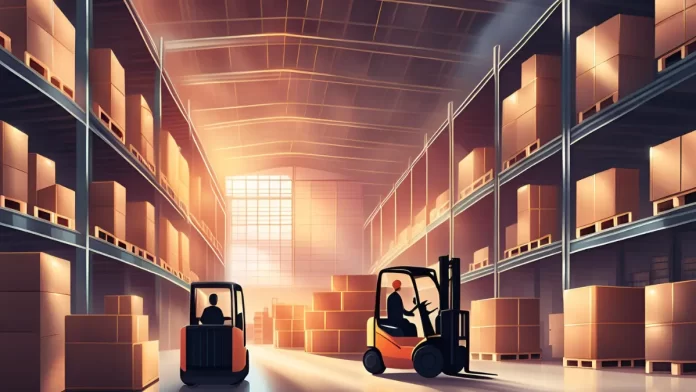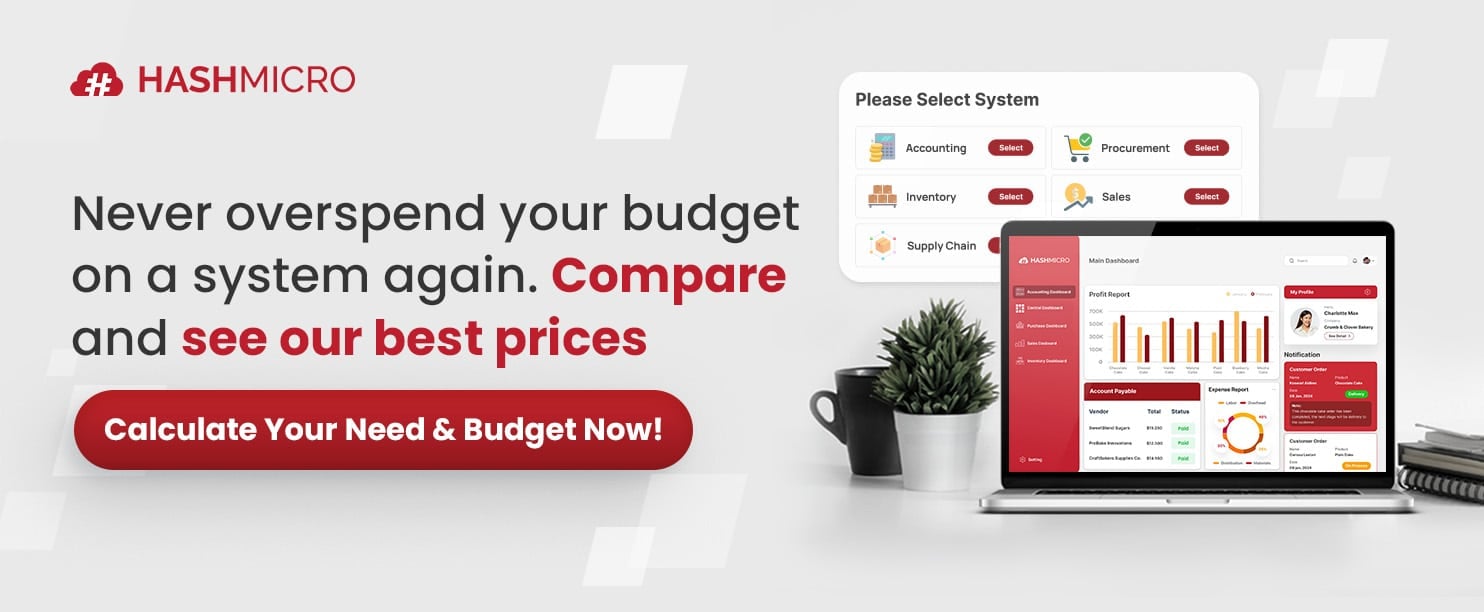Did you know? A recent study in Malaysia found that businesses with well-optimized manufacturing warehouses experienced a 20% reduction in production delays and a 25% improvement in order fulfillment rates. These findings highlight the importance of efficient warehouse management in driving operational success.
This article discusses key strategies to improve warehouse efficiency, including smart design and layout, automation technology, proactive inventory management, sustainable practices, and personnel safety protocols. Discover how solutions like HashMicro’s Warehouse Management System can revolutionize your operations.
Keep reading to learn how to optimize your manufacturing warehouse for greater efficiency and success!
Key Takeaways
|
Table of Content
Content Lists
What is a Manufacturing Warehouse?
A manufacturing warehouse is a facility that stores raw materials, work-in-progress goods, and finished products to support production. It organizes storage and streamlines distribution processes to ensure smooth material flow and efficient inventory management.
Manufacturing warehouses are essential for maintaining production continuity and supply chain efficiency. They help prevent delays by ensuring a steady supply of materials while optimizing space utilization. Additionally, these facilities enhance inventory control, reduce losses, and boost overall operational productivity.
Understanding the Landscape of Manufacturing Warehouses in Malaysia
Manufacturing warehouses in Malaysia play a critical role in supporting the country’s robust industrial sector. These facilities, including licensed manufacturing and factory warehouses, are designed to store raw materials, finished goods, and equipment essential for production.
Key types of manufacturing warehouses in Malaysia include:
1. Licensed Manufacturing Warehouse (LMW)
These facilities are licensed under the Royal Malaysian Customs Department, allowing manufacturers to import raw materials and components without immediate payment of customs duties and taxes, provided the finished products are for export. This setup aids in cash flow management and enhances global competitiveness.
2. Centralized warehouses
Strategically located hubs that streamline manufacturing logistics and distribution processes. By consolidating goods in one location, these warehouses enhance inventory control and improve the efficiency of managing large-scale operations across multiple regions. This setup is particularly beneficial for companies with extensive distribution networks.
3. Decentralized warehouses
Situated closer to production sites or key customer bases, this warehouse reduces transportation costs and shortens delivery times. They enable quicker responses to market demands, enhancing flexibility and ensuring timely order fulfillment, making them ideal for fast-paced industries.
4. Specialized warehouses
Designed to cater to specific industries such as electronics, pharmaceuticals, or agriculture, these warehouses offer tailored storage solutions. They often feature temperature-controlled environments and advanced security systems, ensuring optimal conditions for sensitive or high-value goods.
Your businesses can also benefit from these specialized warehouses, which use agriculture inventory software to efficiently manage stock, reduce waste, and maintain product quality.
Understanding Malaysia’s different types of warehouses helps businesses make informed decisions when establishing or expanding operations. Evaluating each type’s pros and cons allows companies to choose the most suitable option.
Optimizing Warehouse Operations Through Smart Design and Layout
A well-structured design and layout are fundamental to ensuring smooth operations in a manufacturing warehouse. Careful planning helps create an organized environment where goods move seamlessly through each stage of the production and distribution process. Key elements to focus on include:
- Layout optimization: Designing a layout that minimizes travel time and streamlines the flow of goods can significantly enhance productivity.
- Space utilization: Implementing appropriate racking and shelving systems maximizes storage capacity and ensures easy access to inventory.
- Workflow optimization: Analyzing and refining processes, such as wave picking, order picking, and packing, can reduce errors and improve efficiency.
Implementing Automation in Warehousing for Enhanced Efficiency
Implementing automation in warehousing has become increasingly essential for enhancing efficiency and maintaining a competitive edge. In a licensed manufacturing warehouse in Malaysia, several key automation technologies are transforming warehouse management:
- Warehouse Management Systems (WMS): These systems automate inventory tracking, order processing, and data analytics, providing real-time visibility and control over operations.
- RFID and barcode scanning: enhance inventory accuracy by automating counting and tracking processes. This reduces errors in order fulfillment and improves operational efficiency.
- Drones: Performs tasks like inventory counting and stocktaking with real-time data collection. Improves efficiency and reduces labor costs by navigating warehouses independently.
- Robotics: Automates repetitive tasks such as picking, packing, and sorting. Optimizes workflows, minimizes human error, and boosts productivity.
- Internet of Things (IoT): IoT devices monitor equipment performance and environmental conditions, enabling predictive maintenance and ensuring optimal storage environments.
In summary, automation technologies like warehouse management systems, RFID, barcode scanning, drones, IoT, and robotics are transforming the warehousing industry. Adopting these advanced solutions enables businesses to boost operational efficiency, lower costs, and maintain a competitive edge in the dynamic manufacturing sector.
Check out HashMicro’s manufacturing software to explore the best solutions for your business. Discover our pricing schemes below and find the right package for your needs.
Proactive Inventory Management Strategies for Manufacturing Success
Effective inventory management is vital for achieving manufacturing success. By adopting proactive strategies, businesses can optimize inventory levels, streamline operations, and enhance supply chain efficiency.
One essential aspect of this process is the use of regular inventory reports, which provide valuable insights into stock levels and trends. This section highlights key approaches to improve inventory control and support sustainable growth.
1. Stock Keeping Unit (SKU) management
Proper SKU management ensures accurate tracking and control by assigning unique identifiers to each product variant. This system simplifies inventory monitoring, enhances sales performance analysis, and facilitates smarter restocking decisions.
2. Just-in-Time (JIT) inventory
Implementing a JIT approach minimizes excess inventory and reduces storage costs by receiving materials only when needed. This strategy prevents overstocking, improves cash flow, and reduces the risk of obsolete inventory.
3. Cycle counting
Conducting regular cycle counts involves periodically verifying a subset of inventory items. This practice helps detect discrepancies between recorded and actual stock, ensuring data accuracy and supporting better forecasting.
4. Managing dead stock
Dead stock refers to unsellable items that occupy valuable warehouse space. Preventing this requires continuous sales data analysis to identify slow-moving products and apply proactive measures like promotions or clearance sales.
5. Forecasting and demand planning
Accurate forecasting and demand planning rely on analyzing historical sales, market trends, and customer insights to predict future demand. Leveraging advanced tools, such as manufacturing accounting systems, enhances accuracy and decision-making.
Adopting proactive inventory management strategies helps businesses reduce costs, improve order processing, and prevent stockouts. This ensures a streamlined supply chain, driving manufacturing success and competitiveness in Malaysia.
The Advantages of Sustainable Warehousing in the Manufacturing Sector

Sustainability is gaining prominence in manufacturing, and warehousing is pivotal in supporting these initiatives. Embracing sustainable warehousing practices offers numerous benefits for manufacturing businesses in Malaysia, including:
1. Environmental sustainability
Adopting eco-friendly practices, such as utilizing renewable energy and reducing greenhouse gas emissions, helps minimize environmental impact while contributing to a greener future.
2. Energy efficiency
Implementing energy-saving technologies, like LED lighting and optimized HVAC systems, reduces energy consumption and operational costs, creating a more sustainable and cost-effective warehouse environment.
3. Waste reduction
Integrating effective waste management strategies, such as recycling programs and proper disposal methods, minimizes waste generation and promotes a circular economy, aligning with environmental regulations.
4. Carbon footprint reduction
Using sustainable transportation practices, such as electric vehicles and optimized logistics routes, lowers carbon emissions. This contributes to environmental responsibility while enhancing supply chain efficiency.
5. Enhanced brand reputation
Businesses that prioritize sustainability strengthen their brand image and appeal to eco-conscious consumers. Embracing green practices also helps companies stand out in a competitive, environmentally aware market.
Overall, sustainable warehousing practices reduce operational costs, promote regulatory compliance, enhance brand credibility, and foster long-term environmental responsibility, making them a strategic investment in manufacturing success.
Training and Safety Protocols for Manufacturing Warehouse Personnel
Ensuring the safety and well-being of warehouse personnel is essential for maintaining smooth operations. Comprehensive training programs should cover key areas such as machinery operation, proper use of safety equipment, hazardous material handling, and emergency response procedures. This equips employees with the skills needed to perform their tasks safely and efficiently.
Workplace safety can be reinforced through regular inspections and audits to identify and mitigate potential hazards. Establishing clear procedures for recognizing and reporting risks empowers employees to actively contribute to a safer environment, reducing the likelihood of accidents and operational disruptions.
Prioritizing safety not only protects workers but also boosts morale and productivity. A strong safety culture fosters a sense of security, encouraging personnel to perform at their best while minimizing downtime and ensuring consistent warehouse performance.
Improve Your Manufacturing Warehouse Efficiency with HashMicro

Efficient warehouse management is crucial to maintaining smooth operations and ensuring timely delivery. HashMicro is the solution to revolutionize your warehouse processes with its advanced Warehouse Management System (WMS).
HashMicro offers a comprehensive system to streamline warehouse operations, from product dimension tracking to smart putaway strategies. It simplifies workflows with automation and real-time data, while in-depth reporting provides better decision-making and efficiency insights.
Here are the key features that make HashMicro a vital solution for optimizing manufacturing warehouse operations:
- HashMicro Hashy AI: Automates inventory tracking, optimizes procurement, and streamlines warehouse operations with real-time data, smart notifications, and seamless workflow integration.
- Product Dimension Tracking: Accurately track the height, width, and weight of each item to determine the ideal storage location, ensuring optimal space utilization and organized inventory.
- Location Dimension Management: Automatically calculate warehouse dimensions and match them with the capacity of incoming goods, preventing overcrowding and maximizing storage efficiency.
- Putaway Strategy Settings: Set custom storage strategies for newly received items, ensuring they’re placed in the most appropriate locations to streamline retrieval and reduce errors.
- Putaway Capacity Checking: Check real-time storage capacity, record item volume, and assign goods to the best-suited bin locations to avoid overloading and optimize space.
- Warehouse Pallet Racking: Organize shelves efficiently by categorizing racks based on product type and function while assigning unique rack numbers for seamless item tracking.
- Warehouse In-Depth Reporting: Access comprehensive reports to monitor warehouse performance, track inventory flow, and make data-driven decisions with insights available in multiple formats.
Conclusion
Optimizing manufacturing warehouse operations is crucial for enhancing efficiency, reducing costs, and ensuring smooth production processes. Businesses can create a more streamlined and productive warehouse environment by adopting smart design, automation, proactive inventory management, and sustainable practices.
To address these needs, HashMicro offers a comprehensive Warehouse Management System (WMS) equipped with features like real-time inventory tracking, smart putaway strategies, and in-depth performance reporting. With HashMicro, businesses can maximize efficiency, improve accuracy, and stay ahead in today’s competitive manufacturing landscape.
Ready to transform your warehouse operations? Try a free demo today and experience the future of manufacturing efficiency!
Pertanyaan Seputar Manufacturing Warehouse
-
What are the three types of warehouses?
The three main types of warehouses are:
– Private Warehouses: These are owned and operated by private companies to store their own goods.
– Public Warehouses: These are available for use by multiple businesses and are often rented for storage needs.
– Bonded Warehouses: Secure storage facilities where imported goods are kept before customs duties are paid. -
What is the difference between a factory and a warehouse?
A factory is a facility where raw materials are processed or assembled into finished products, involving production activities. In contrast, a warehouse stores raw materials, work-in-progress goods, or finished products before distribution.
-
What are the 6S of warehousing?
The 6S of warehousing refers to six principles aimed at maintaining organization and efficiency:
– Sort: Eliminate unnecessary items.
– Set in Order: Arrange tools and materials for easy access.
– Shine: Keep the warehouse clean and well-maintained.
– Standardize: Establish consistent procedures and practices.
– Sustain: Maintain and improve processes over time.
– Safety: Prioritize safe practices to prevent accidents and injuries.

































